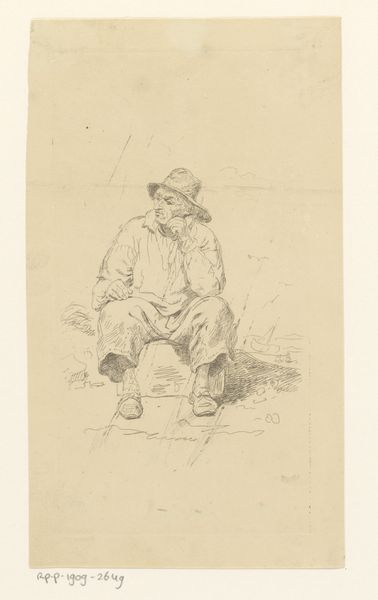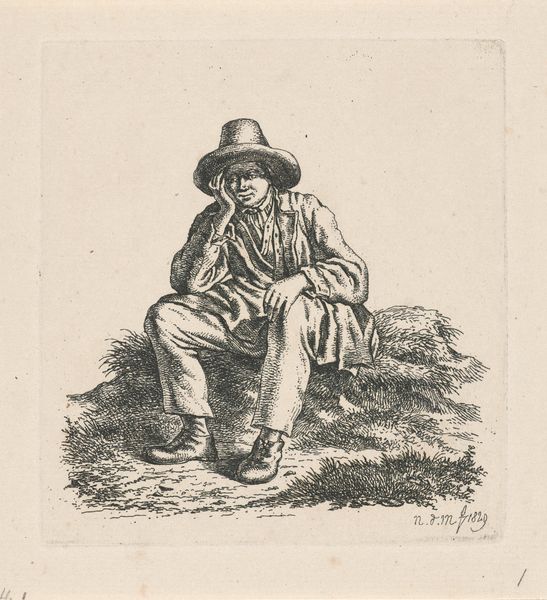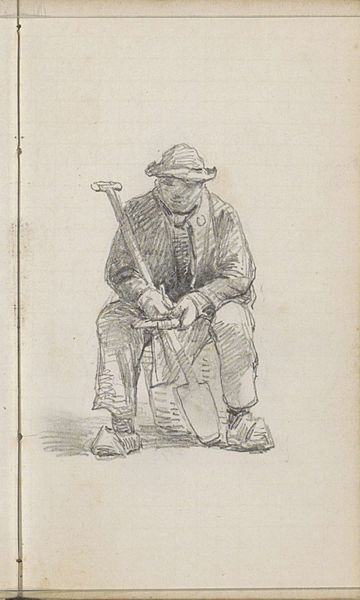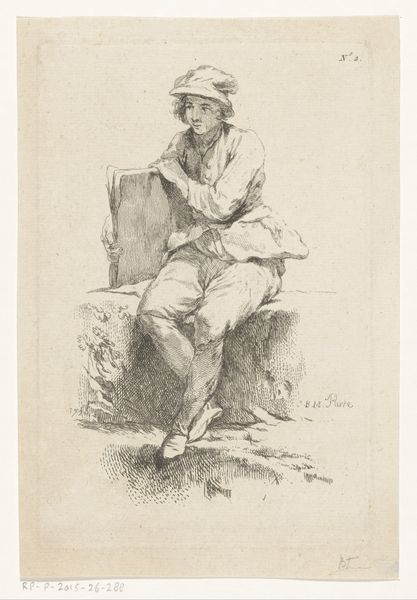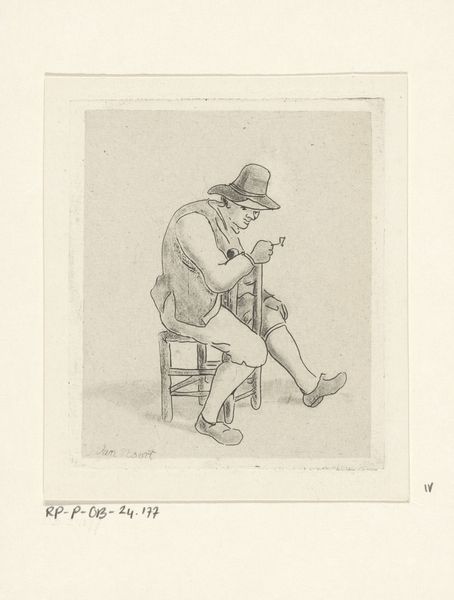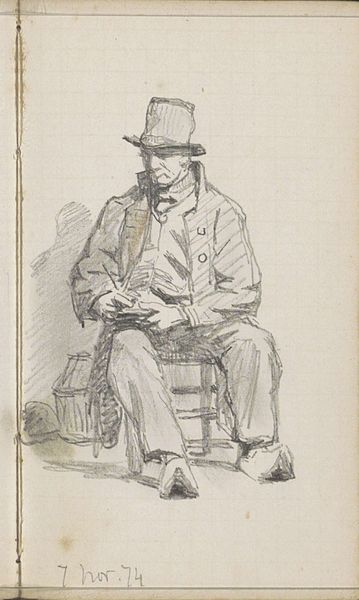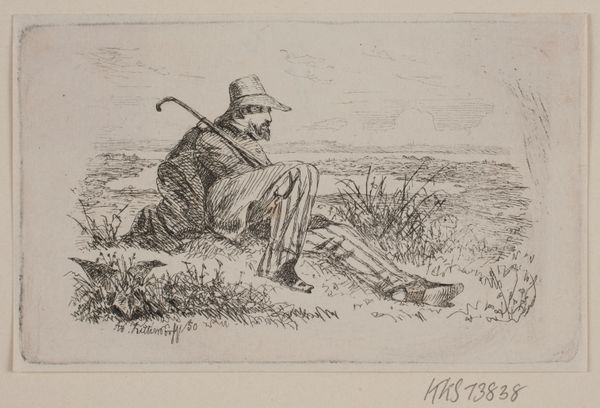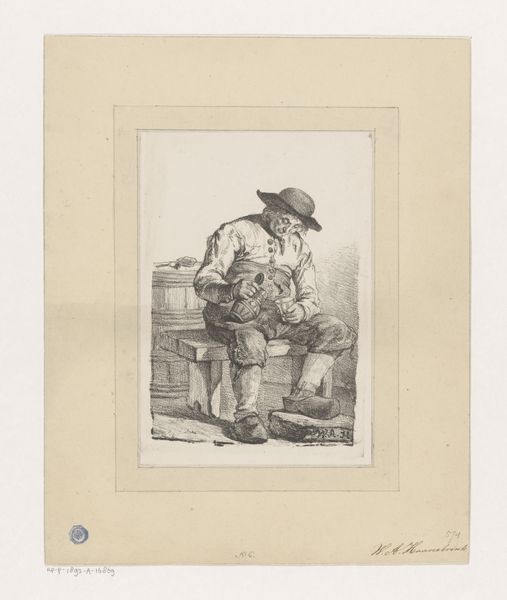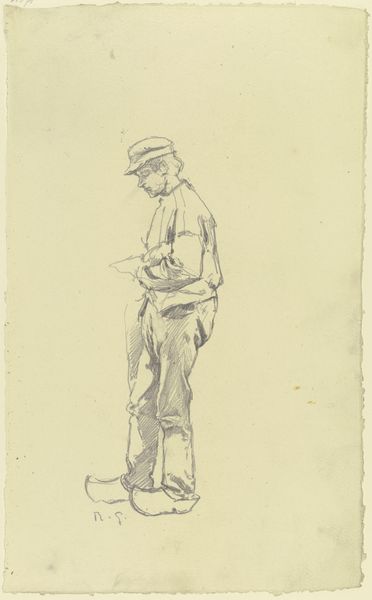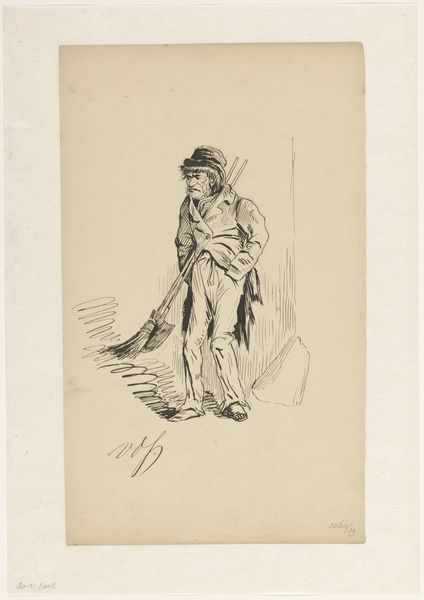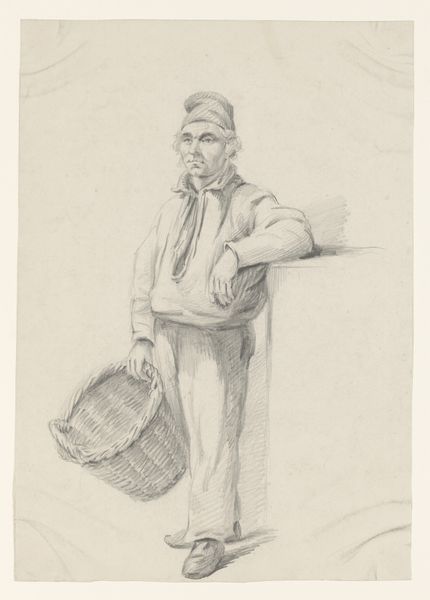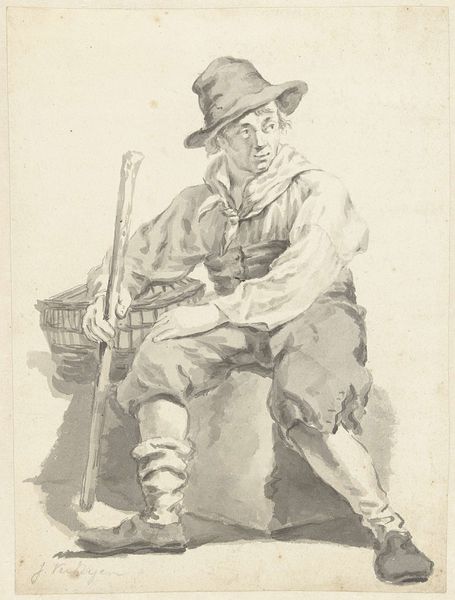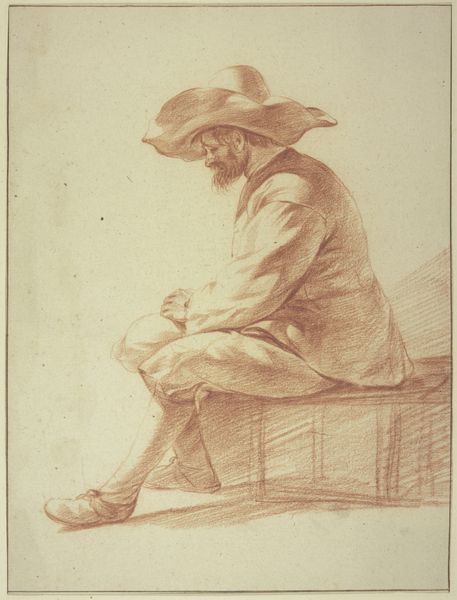
drawing, print, etching
#
portrait
#
drawing
# print
#
etching
#
pencil drawing
#
portrait drawing
#
realism
Dimensions: 183 mm (height) x 219 mm (width) (bladmaal)
Curator: Immediately, I’m struck by the weariness etched on this man’s face, that shadowed brow hinting at a life weathered by time and toil. Editor: I see that too, it has the distinct feeling of hard-worn labor. We are looking at “Siddende Mand”, or “Seated Man,” an etching made by Oscar Andersen sometime between 1880 and 1906, and it’s currently held at the SMK, the National Gallery of Denmark. I find the simple lines quite evocative. Curator: Andersen's commitment to Realism situates this work within a broader 19th-century artistic and social movement. There’s a desire here to present working-class individuals authentically, rejecting idealization in favor of a more honest portrayal. You notice his worn clothing, the simple stool… this is not about nobility. Editor: Exactly. The etcher’s line doesn’t flatter or conceal; instead, it emphasizes the materiality of lived experience. Notice the paper itself and how the pressure of the etching plate would create a slightly raised surface; there's a physicality here that speaks volumes. The means of production emphasize a connection to labor beyond the sitter himself. Curator: The pipe he holds is a symbol freighted with implications—dependence, solace, working-class leisure… But it also speaks to the culture of masculinity within this time period. His posture isn't powerful or commanding; he's slumped, introspective, vulnerable even. Editor: I’d argue that that vulnerability is tied to his position within the production chain, too. Consider the societal pressures weighing down working-class men at this moment, a critical juncture defined by rapidly industrializing practices. This work really opens questions surrounding consumption. Is this an anti-capitalist sentiment at play, maybe? Curator: Yes, that potential tension makes the portrait endlessly thought-provoking. It makes one question one's own relationship with labor, power, and seeing. Editor: Agreed. It invites the contemporary viewer to confront their assumptions about labor. I feel the medium allows a closeness in a way paintings would not. The material reality of the etching links it intimately to the era's social struggles.
Comments
No comments
Be the first to comment and join the conversation on the ultimate creative platform.
